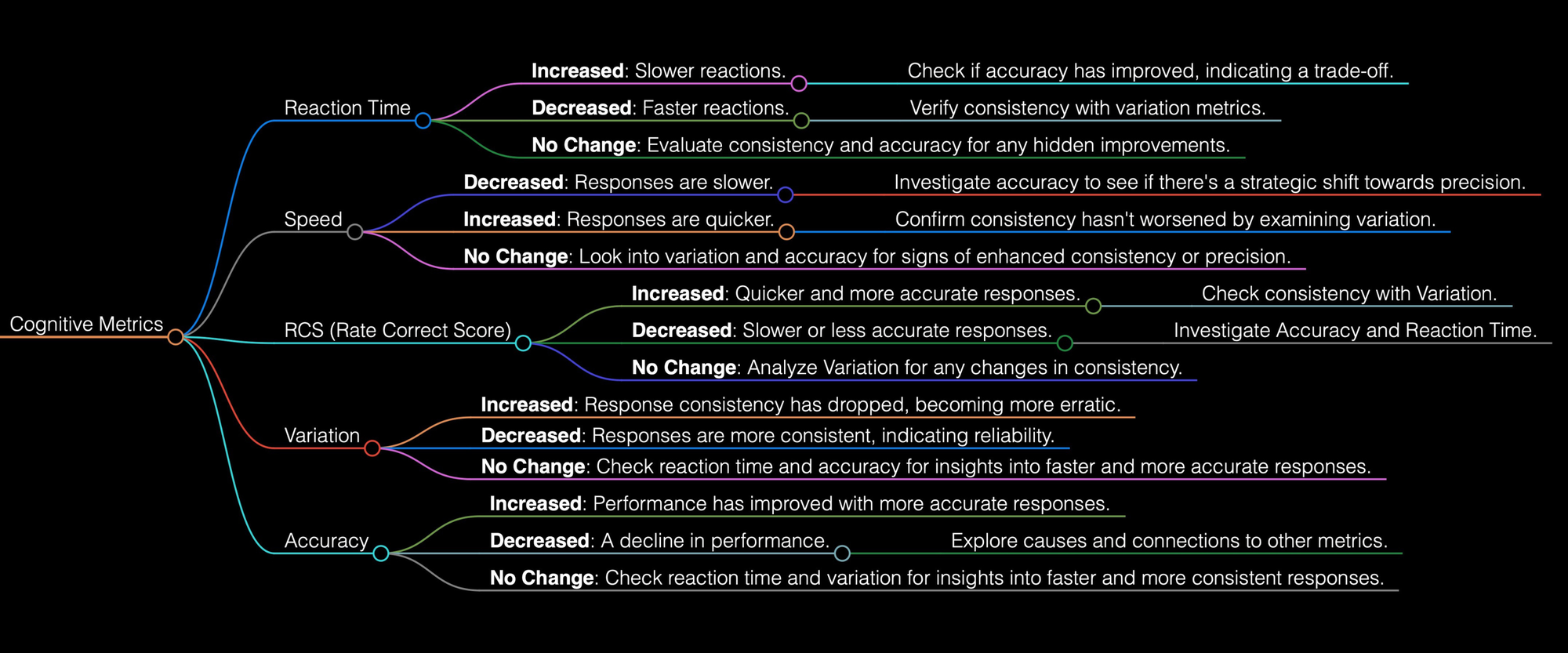Consistency Over Chaos: The Critical Role of Variation
A decrease in this metric signifies an athlete's increasing reliability and predictability.

Variation is a critical metric in cognitive performance, serving as a reality check that unveils an athlete's consistency and adaptability across various conditions. A decrease in this metric signifies an athlete's increasing reliability and predictability—traits that are indispensable for success in both training and competition. On the other hand, an increase in variation may signal a lapse into erratic performance, potentially distorting other metrics and obscuring true progress. Even when variation remains steady, continuous examination of reaction time and accuracy is essential. Enhancements in these areas, paired with consistent variation, indicate nuanced improvements in an athlete's speed and precision, subtly elevating their overall performance while ensuring stability.
Now, let's move on to how to interpret variation data.

Decreased Variation
A decrease in variation is a positive indicator, suggesting that an athlete is achieving greater consistency in their performance. This is crucial for both training environments and competitive settings, as it implies that the athlete's performance is becoming more predictable and dependable. Coaches and athletes alike aim for reduced variation to ensure that performance improvements are genuine and sustainable rather than being sporadic peaks.
Increased Variation
Conversely, an increase in variation might indicate that an athlete’s performance is becoming less stable. This can be problematic as it may lead to misinterpretations of other performance metrics, falsely appearing as improvements or declines. Increased variation often calls for a reevaluation of training methods or strategies to address the underlying causes of inconsistency.
No Change in Variation
Stability in variation isn't necessarily a sign that no further improvements are needed. Instead, it should prompt a detailed analysis of other key performance indicators such as reaction time and accuracy. Stability in variation combined with improvements in these areas can indicate that an athlete is enhancing their skills in a balanced manner—becoming faster and more precise without sacrificing consistency.
When variation metrics do not show significant changes, it’s essential to delve deeper into other areas like reaction time and accuracy to gain a comprehensive understanding of an athlete's progress. Enhancements in reaction time and accuracy, even with steady variation, can denote subtle yet significant improvements in overall athletic performance.
By monitoring and interpreting variation alongside other metrics, coaches and athletes can gain a more comprehensive view of performance dynamics. This comprehensive approach helps in identifying true areas of improvement and adjusting training regimens to optimize an athlete's performance trajectory.
🌐 Connect With Us
🌍 Soma Technologies: Engineered to enhance human performance.
📸 Instagram: Dive into our world through exclusive photos and stories.
👥 Facebook: Join our community for the latest updates and discussions.
📈 LinkedIn: Connect with us professionally and stay informed about industry news.
🎥 YouTube: Watch our latest videos, tutorials.
🐦 X: Follow us for instant updates, news, and engaging tweets.
